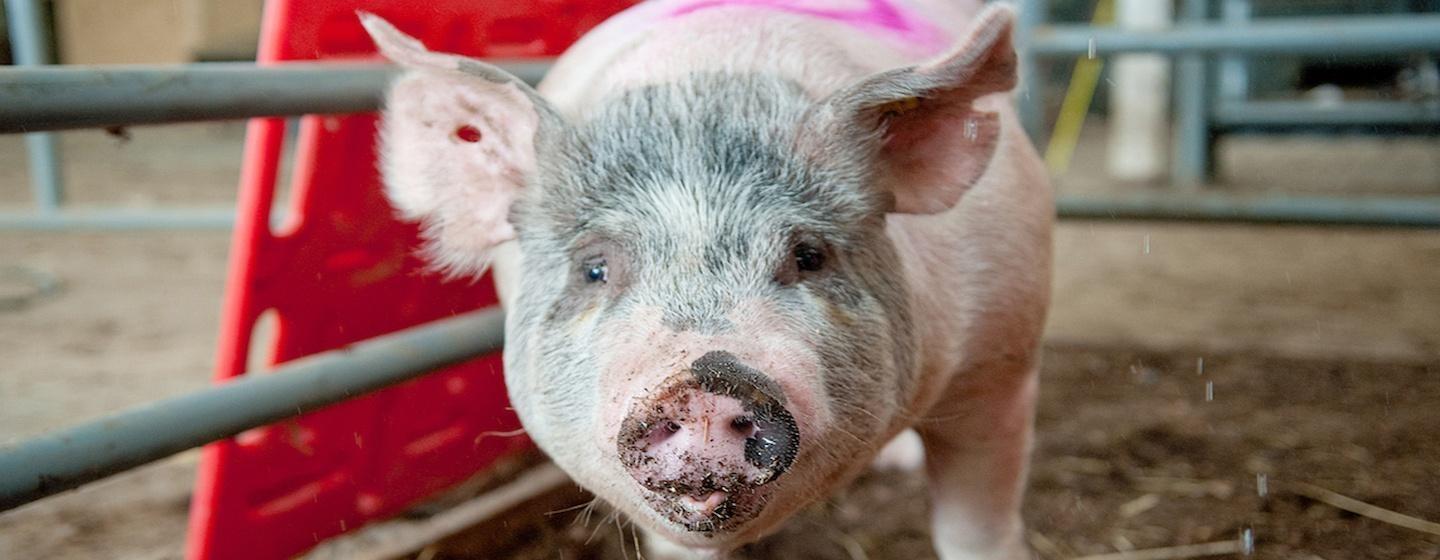Exporting Poop for Profit Could Help Farmers and the Environment


Before talking about what hogs leave behind on North Carolina farms, you need to understand just how many hogs and hog farms there are in the state.
North Carolina is one of the nation’s leading hog producers. Statistics from the North Carolina Pork Council show in 2017 there were 2400 permitted farms in the state with about 9 million hogs.
Most of the farms are in just five counties: Bladen, Sampson, Duplin, Robinson Wayne. Hog farming and pork production is a
$10 billion industry, supporting more than 44,000 jobs.
In fact, hogs leave behind 8-to-10 times more poop than humans. A 2008 Government Accounting Office study showed hogs leave behind 8-to-10 times more poop that humans. The study reported number of hogs in the state produce almost 15.5 million tons of poop.
Farms typically use what’s called a “lagoon and sprayfield” system. That means animal waste is stored in massive, open lagoons on the farm. The top layer (effluent) is sprayed on farm fields to fertilize crops.
That’s saves farmers a lot of money.
But the phosphorus-rich solids sink to the bottom. That sludge concerns environmentalists and people who live near the hog farms, who worry about water pollution, health effects and the smell. There have been and continue to be lots of lawsuits around the issue.
But the lagoons are also a problem for farmers, who need to and dispose of the building sludge to maintain compliance with their permits. The heavy, wet material is expensive to transport and difficult to dispose of. High sludge levels make lagoons less efficient and can increase nuisance issues like odors.
But there’s a new idea that could solve the lagoon sludge problem and allow farmers to profit from all that poop.
Thanks to a federal grant, the NC Foundation for Soil & Water Conservation is partnering with Phinite Inc. and North Carolina State University’s crop and soil sciences researchers to study how to dry swine sludge. The dried product would be easy to transport and use for fertilizers in areas of the country that are needing to add phosphorus to their soils.
“Manure is an excellent source of a variety of nutrients,” but swine sludge is incredibly high in phosphorus,” said Steph Kulesza, assistant professor of nutrient management and animal waste at NC State. “An organic, slow-release phosphorus source is of great value to phosphorus-deficient agricultural areas, like the Midwest. NC already has a lot of phosphorus in our soils, the nutrients in the bottom of these lagoons could be better utilized elsewhere.”
The process uses a simple low-cost, low-energy solar process to dry the lagoon sludge into a granular product. Robots handle and mix the drying sludge. The finished product is light and easy to transport and blend with other materials for fertilizer.
Phinite predicts its air-drying system can remove two years’ worth of sludge per year.
“Reducing lagoon sludge volume could significantly improve the local environmental footprint,” adds Kulesza. “We can lower the amount of phosphorus applied to effluent spray fields and also improve the resiliency of these animal operations to extreme weather events such as hurricanes.”
Three farms in eastern North Carolina are testing the sludge drying systems. The group is also testing the dried manure as a phosphorus fertilizer on two corn fields at two NC research stations which have different soil types.
“Hog lagoon sludge has been heavily anaerobically digested and contains relatively low levels of ammonia so it’s not an odor risk like raw manure,” said Jordan Phasey, CEO of Phinite. “By combining sludge drying with the current push to implement anaerobic digestion on swine farms, we’re on the cusp of being able to recycle absolutely everything that comes out of an animal on the farm. At a profit. This has the potential to completely transform the sustainability of agriculture.”